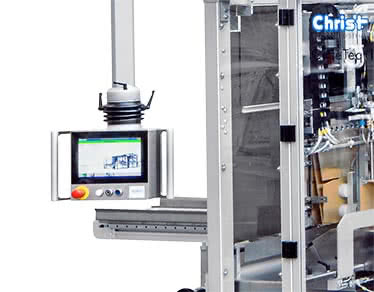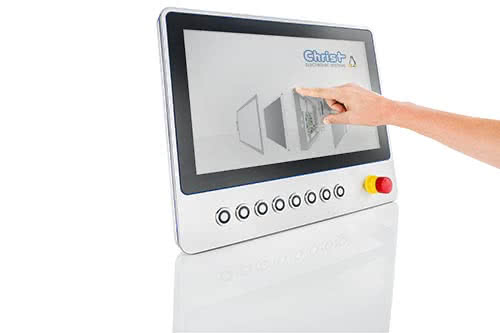What is an HMI?
Basically, an HMI or Human Machine Interface is a user interface between a human and a machine. This can be the light switch, the steering wheel in a car or a complex HMI panel in machines and systems.
We focus on the HMI in machines and plants of industrial production. With the help of HMI displays, machines can be operated efficiently and safely. Machine states and information are clearly displayed on the panels. For further interaction, there are often still buttons and switches. One of the issues here is safe machine operation, which must also be guaranteed in panic situations. For this reason, so-called "emergency stop buttons" are often integrated in the HMI panel.
HMI in the overall system
Machine states, production data, etc. are displayed on the HMI panel with the help of software applications. The machine operator can use the touchscreen to influence the machine. HMIs are often part of a SCADA (Supervisory Control and Data Acquisition) system. This includes, for example, programmable logic controllers (PLCs) and input and output sensors. All the information acquired is then displayed on the HMI, enabling user-friendly, safe and efficient machine operation.
Longevity of HMI panels in industrial applications
In industry in particular, many machines and systems are used over long periods of time. In this context, it is important that the components used are particularly durable. Christ HMI only uses industrial-grade components that are available for the long term. This means that the HMI displays can be used for many years. The mechanics of the human-machine interface also play a major role. In many industrial productions it is dusty, dirty or liquids are used. These must not penetrate the housing. Christ HMIs are designed precisely to meet these requirements.
You can use the HMI as a panel PC, i.e. as an all-in-one solution. Here, everything is compactly installed in the device. Alternatively, you can also install an industrial PC in the control cabinet and combine it with a monitor. This is possible with the help of the extender solution even for large systems with a distance of up to 100 m.
The touch screen is also an important component. Today, mainly capacitive touchscreens are used for machine operation because they are robust and can be operated intuitively.
Basically, it must be decided how the Human Machine Interface will be mounted. Should it be mounted on a support arm? If so, using VESA mounts, or Icotek screw mounting? Or should it be inserted into a recess. For this we have various touch panel solutions.


Advantages of HMIs:
- More transparency in the production processes
- Efficient and intuitive machine operation
- Increased ease of use, through familiar touch operation
- Multi-touch capability of capacitive touchscreens increases operating reliability through two-hand operation
Usability in machine operation
Machine and system operation is becoming increasingly complex. More and more functionalities are being added. For this reason, clear and intuitive usability is particularly important. This is the only way to ensure smooth and error-free machine operation.
The coordination of hardware and software is also an important aspect here. At Christ, we develop the hardware in-house. Through close cooperation with our software department, customers receive a perfectly coordinated overall solution if required.
